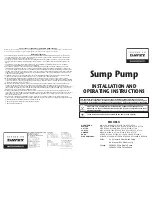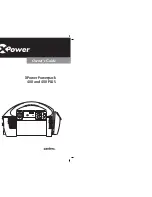
Commands and Queries Reference
Alphabetical
reference
PROT
set-up the Protection Mode of the Power Module.
Syntax
PROT
<ch>,<int>
Parameters
the number of the Power Module to be programmed.
the desired Protection Mode: a value of “0” means
Manual Protection Mode - in this mode the OVP and
OCP thresholds are programmed by the user. A
value of “1” means Automatic Protection Mode - the
OVP and OCP thresholds are set, automatically, by
the XMP 2600 as 10% to 20% above the SET
values. If changing from Manual to Automatic mode
then new OVP and OCP thresholds are calculated.
Category Protection
Type:
Overlapped
PROT?
return the current Protection Mode of the XMP 2600.
Syntax
PROT?
<ch>
Parameters
the number of the channel to be queried.
Category Protection
Type:
Sequential
PSR?
return the value of the Primary Status Register. The value returned is a
decimal number in the range 0 to 255 representing the bits of the
Register.
Syntax
PSR?
Parameters none
Category Status
Type:
Sequential
PWR?
return the value of the Power Warning Threshold of the XMP 2600
master mainframe. For the XMP 2600 this value is 2400.
Syntax
PWR?
Parameters none
Category System
Type:
Sequential
RAMP
program the Power Module’s Ramp Duration.
Syntax
RAMP
<ch>,<ramp_duration>
Parameters
the number of the Power Module to be programmed.
the Ramp Duration in units of mili-seconds. The
XMP 2600 Ramp Duration resolution is 6mS, so the
programmed value will be set internally to a
multiplication of 6. The general format for the Ramp
Duration is: sss:nnn where sss=seconds and
nnn=mili-seconds. The maximal duration is 393:210.
Duration can be programmed in units of mili-
seconds (e.g. “4032” = 004:032) or seconds (e.g.
“100:” = 140:000).
Category Settings
Type:
Sequential
XMP 2600 Programming Manual
rev. 1.1
57
















































